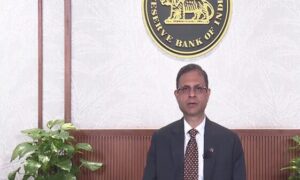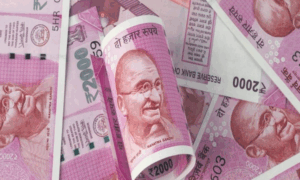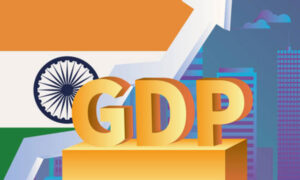
Picture Credit: Business Today
Rahul works in a multinational. Every day, he commutes in the sharing autos. Frequently, he witnesses suspicion over coins especially ₹ 10 Coins. Sometime it leads to heated arguments because auto drivers don’t accept such coins and fail to give an give a valid response on why these coins are not acceptable to them and who is informing them? One day, Rahul threw such coins in the nearby drain when auto driver declined to accept ₹ 10 Coins. He felt cheated and witnessed a different kind of harassment. He realised that there is no mechanism to deal with such challenges in the real time. Rumors and role of asymmetrical information are aggravating the problem. One question stuck in his mind, why people are spreading such rumors and who they are?
Amidst suspicion about the genuineness, the Reserve Bank of India (RBI) clarified that all 14 types of ₹ 10 are valid and legal tender for the transaction. As the RBI communiqué stated, “It has come to the notice of the Reserve Bank that in certain places there is reluctance on part of traders and members of public to accept ` 10 coins due to suspicion about their genuineness.” These coins have distinctive features to reflect various themes of economic, social and cultural values and are introduced from time to time.
In almost all Indian cities, there is a sheer reluctance on part of traders and shopkeepers to accept ₹ 10 coins. It crept in the common parlance. People are facing enormous challenges especially who are commuting in the public transport. Auto drivers hardly accepting such coins in cities like Noida. There is a sheer lack of mechanism to deal with such challenges. Though, RBI has also advised banks to accept coins for transactions and exchange at all their branches.
India has a long history of commemorative coins. Historically, several emperors and ruler issued coins in order to legitimise their rules. Its metal varies from bronze, bronze, silver, gold and many more. It is evident that historians studied coins as tools to analyse economic and political condition of a period. After examining the coinage of the dynasty, historians drew their conclusion. In this backdrop, a new stream of history emerged. It’s known as Numismatics.
In order to emphasise on the Connectivity and Information Technology, the Government of India issued Bi-Metallic coin of Rs 10 March 26, 2009.
₹ 10 Coins as Circulating Commemorative Coin:
Types of Coins
| S.N. | Theme | Year |
| 1. | Connectivity and Information Technology | March 26, 2009 |
| 2. | Unity in Diversity | March 26, 2009 |
| 3. | Homi Bhabha Birth Centenary Year | February 11, 2010 |
| 4. | RBI at 75 | April 01, 2010 |
| 5. | 60 Years of the Parliament of India | June 14, 2012 |
| 6. | Silver Jubilee of Shri Mata Vaishno Devi Shrine Board | August 29, 2013 |
| 7. | Diamond Jubilee of Coir Board | July 17, 2014 |
| 8. | Centenary Commemoration of Mahatma Gandhi’s Return from South Africa | April 16, 2015 |
| 9. | International Day of Yoga | July 30, 2015 |
| 10. | 125th Birth Anniversary of Dr. B. R. Ambedkar | January 28, 2016 |
| 11. | Birth Centenary of Swami Chinmayananda | June 22, 2016 |
| 12. | One Hundred Twenty-fifth Year of National Archives of India | April 26, 2017 |
| 13. | 150th Birth Anniversary of Shrimad Rajchandra | June 29, 2017 |
Source: Reserve Bank of India
Going through the detail, one can say that themes of the commemorative are very wide. As the demonstrated in the graph, the Modi Government frequently minted such coins as tool to commemorate Indian icons and major contributions.
Independent India issued its first commemorative coin in 1964. Since then, the Union Governments are circulating various types of commemorative coins. Such coins have distinctive features to reflect various themes of economic, social and cultural values. It’s evident that the government use the commemorative coins as tool of publicity which gives an impression that how the political leadership is concerned about particular personality, issue or event.
One can classify such coin in two categories namely, Non-circulating Commemorative Coins and Circulating Commemorative Coins. With increasing technological advancement, the governments are circulating various kinds of metallic coins. Bi-Metallic coin of Rs 10 is one of them.
While releasing the commemorative coins on Dr. B.R. Ambedkar, Narendra Modi –the Prime Minister said that there were only a few individuals who remain alive in public consciousness, even 60 years after their death. He said the more we recall Dr. Ambedkar’s thought, in the context of issues currently faced by India, the more we come to respect his vision and his approach to inclusiveness.
Since the early 20th century, newly independent countries released a huge number of the commemorative coins in order to commemorate and celebrate their heroes and their past. It is evident that a deepening democracy and emerging cultural nationalism created a favourable platform for it. The government handpicked a wide range of issues ranging from economic to cultural. Sometimes, they deliberatively selected “ignored” or unsung heroes. With help from the commemorative coins, the government gives a message that they are concerned about the past, present and future.


















